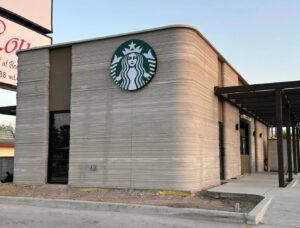In an era where cinema attendance faces historic declines, movie theaters may have found their most chaotic yet effective marketing weapon: a horde of teens on TikTok.
The latest film to ignite cultural bedlam is A Minecraft Movie, which has spurred unprecedented behavior among younger audiences, leading to viral dance-offs, popcorn-throwing spectacles, and, most notoriously, the now-iconic “chicken jockey” moment.
But while some theater chains are scrambling to curb the chaos—issuing bans, tightening policies, or scolding patrons—others are embracing it, even encouraging it with 4DX “interactive” screenings.
This emerging phenomenon is not just a matter of behavioral disruption. It signals a profound transformation in how audiences, especially Gen Z and Gen Alpha, interact with cinema. A Minecraft Movie is not simply being watched; it’s being performed, echoed, and remixed. Moviegoing is becoming a participatory sport. And that changes everything.
From Screens to Stages: Moviegoing as Performance
Cinema, for over a century, has adhered to a fairly stable social contract: the lights dim, the audience quiets, and attention is directed unidirectionally at the screen. The movie plays; we watch. But what A Minecraft Movie reveals is the dissolution of that contract. Theaters are no longer passive spaces—they’re becoming stages.
TikTok videos from screenings depict teens riding on each other’s shoulders during the infamous zombie-chicken scene, a reference to Minecraft’s absurd in-game mechanics where zombies can mount chickens. Others show audience members flinging popcorn, dancing in the aisles, and creating spontaneous standing ovations mid-movie. These actions are not distractions; they are performances—rituals of belonging, coded interactions shaped more by digital virality than by cinema etiquette.
In this context, the movie itself becomes source material, not the main event. It’s a catalyst, a prompt for audience interaction. Just as TikTok trends remix songs into dance challenges or memes, A Minecraft Movie has become a canvas for young audiences to paint their own behavior on top of.
The Chicken Jockey Moment: A Symbol of Cultural Convergence
The “chicken jockey” scene—a brief moment when a zombie character rides a chicken—is inherently absurd. It borrows from one of the most notorious (and beloved) quirks of the original Minecraft game. But its cultural function goes far beyond the screen.
For fans of the game, this moment is an inside joke made public. It’s fan service. But in a live theater packed with other fans, it becomes a trigger for collective reaction. The laughter, chaos, and TikTok reposts following the scene are as much about in-group recognition as they are about comedy.
This kind of coded communal behavior echoes past cinema spectacles: the rice-throwing at The Rocky Horror Picture Show, the #gentleminions wave at Minions: The Rise of Gru, or even the cosplay screenings of Marvel films. But the difference here is the speed and scale of transmission. Social media, especially TikTok, accelerates the spread of behaviors, turning isolated acts into cultural scripts.
Theaters become the arenas where these scripts are tested, revised, and performed.
When the Theater Becomes a Meme
One New Jersey theater recently banned groups of boys from entering A Minecraft Movie screenings without adult supervision. It sounds drastic, but it mirrors a broader pattern of institutional responses to spontaneous youth-driven behaviors. For older generations, the actions seem disruptive—an erosion of civility, a rejection of tradition. But to Gen Z and Alpha, these moments represent something far more compelling: cinema as community experience.
For these young audiences, going to the movies isn’t about solitude or escapism—it’s about collective expression, identity performance, and above all, participation. The boundary between audience and performer is porous. To sit silently is to disengage.
What’s more, these behaviors are documented and posted online, not merely for followers but for cultural currency. To participate in a viral trend—especially one built around something as global and iconic as Minecraft—is to gain visibility, relevance, and social capital.
From Crisis to Opportunity: Cinema’s Youthquake
Let’s not forget: 2024 and 2025 have been slow years for cinema. The box office has struggled to recover from pandemic-era closures and shifting habits. Streaming continues to dominate. And yet, A Minecraft Movie pulled in $313 million globally during its opening weekend—the biggest video game movie opening in history.
Is it because the movie is great? Not necessarily. It’s because the experience of seeing it is great, at least for the right demographic.
Theaters that lean into this dynamic could turn what seems like a nightmare into a business model. That’s exactly what a UK cinema chain has done by offering “Chicken Jockey 4DX” screenings, essentially marketing the chaos rather than suppressing it. With vibrating seats, strobe lights, air gusts, and timed sound effects, 4DX embraces disruption and offers it as an augmented experience.
This is not merely adaptation—it’s evolution. Cinema is becoming modular, responsive, hybrid. Theaters are no longer just about projection; they’re about activation.
The Rise of the Communal Meme
In cultural theory, scholars have long talked about the shift from spectator to prosumer—someone who consumes and produces at once. What A Minecraft Movie proves is that prosumers are no longer online only. They’re in the seats next to you. They’re dancing in the aisles, creating memes in real time, and documenting it for the rest of the world.
These behaviors are not aberrations. They’re the new normal. Cinema has always been shaped by its audience, but rarely this visibly and this rapidly.
Think of the “Barbenheimer” phenomenon from 2023, when fans of Barbie and Oppenheimer collided in a frenzy of double-feature aesthetics. Or the communal crying sessions during Everything Everywhere All At Once. What we’re seeing is a global craving for shared emotional rituals.
Minecraft just happens to deliver that in the form of a mob riding a chicken.
Youth Culture Isn’t Breaking Cinema. It’s Saving It.
Let’s shift the narrative: These TikTok teens aren’t ruining the theater experience—they’re reinventing it. For too long, movie theaters have struggled to compete with home screens, phones, and on-demand entertainment. What youth culture brings is urgency, vibrancy, and unpredictability.
Sure, not every adult wants to dodge airborne popcorn or hear cackles during key dialogue. But not every screening has to cater to the same audience. Multiplexes can segment offerings:
- Silent Screenings for traditionalists
- Interactive Showings for participatory fans
- Cosplay Nights, Meme Matinees, or TikTok Times
This isn’t about one right way to watch a movie. It’s about offering pluralistic viewing modes—a cinema culture as diverse as its audience.
Nostalgia and the Power of Play
Minecraft is not a new game. It’s a 15-year-old sandbox platform that defined an entire generation’s idea of creativity and exploration. For many Gen Z viewers, this movie is not just entertainment—it’s a return to the infinite worlds of their childhood.
What makes Minecraft unique is its open-endedness. There are no set objectives. Players define their own goals, build their own homes, defeat or befriend mobs on their own terms. This ethos transfers to how its audience now treats cinema: not as a fixed narrative, but as a sandbox.
The film might have a plot. But the experience is co-authored by the audience.
What Brands, Studios, and Theaters Must Learn
This isn’t just a flash-in-the-pan phenomenon. It’s a strategic shift, one with long-term implications for marketing, engagement, and experience design.
Studios should:
- Embrace participatory culture early in their campaigns. Tease moments likely to go viral. Design scenes with remixability in mind.
- Partner with TikTok creators not just for promotion, but for experience translation—to guide their followers in how to engage.
- Consider tiered releases: immersive previews, creator-first screenings, and general launches with community rules.
Theaters should:
- Reimagine space as flexible: allow some showings to include movement, light, and noise.
- Train staff as experience facilitators, not just security monitors.
- Develop content-specific protocols: not every movie warrants a 4DX reaction, but some thrive on it.
The Movie Is the Moment
Ultimately, A Minecraft Movie shows us something that has been bubbling for years: cinema is no longer a linear experience. It is:
- Social
- Participatory
- Transmedia
- Memetic
Theaters that adapt to this model will survive, perhaps even thrive. Those that cling to the hushed sanctity of silent seats and popcorn discipline? They may fade like the VHS aisle.
What teens have done—perhaps unknowingly—is ignite a renaissance of collective storytelling. It might be wild. It might be loud. But it’s undeniably alive.
And as cinema struggles to redefine itself in the streaming era, that’s the one thing it can’t afford to lose.
No comments yet.








